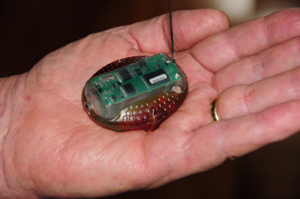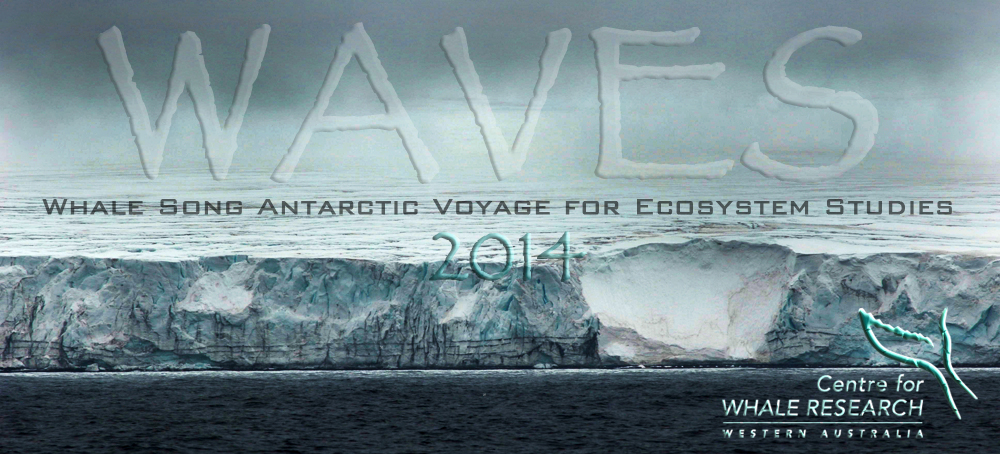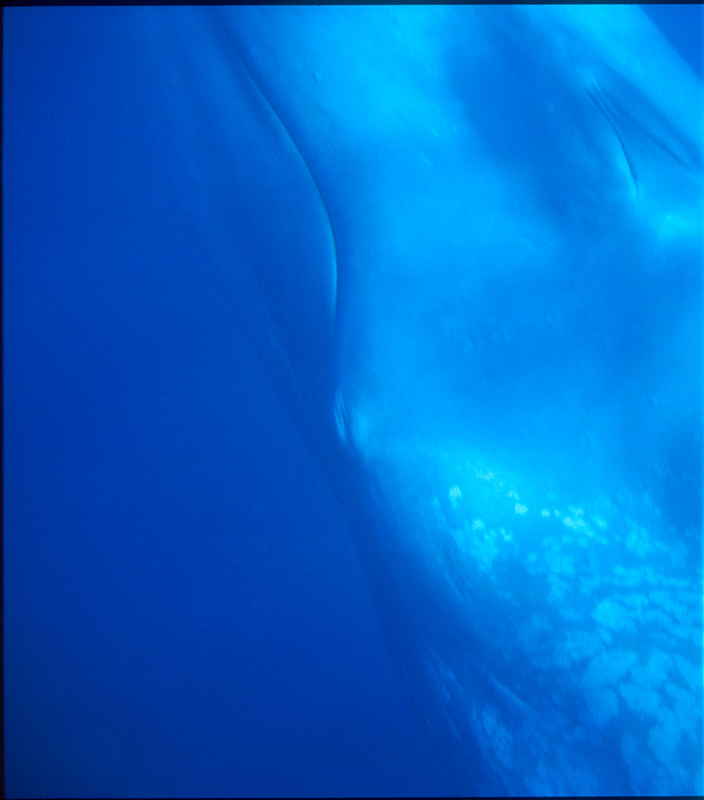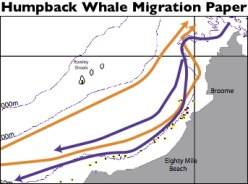DAY 11 WAVES – ADDITIONAL ISSUE

LIMPET (Low Impact Minimally Percutaneous External-electronics Transmitter) tag used on the Humpback whales.
On the morning of Day 11, 09/01/2014, the WAVES team successfully deployed two specialised tags on humpback whales “Round” and “Wobble”. The tags are brand new, called LIMPET tags (Low Impact Minimally Percutaneous External-electronics Transmitter) and report not only geographic location but dive profile data. This type of tag was developed by Dr Russ Andrews who is part of the WAVES team here in the Antarctic.
The comparison of dive profiles (feeding events) between the prolific humpback population and the depopulate blue whale population may help humans understand if humpback whales are simply more efficient predators than blue whales.
Key to this understanding are krill biomass measurements where the whales dive. The team follows the whales every movement with the quiet RV Whale Song, using a digital echosounder to measure the number of kilograms of krill per cubic metre of seawater that the whales are swimming through.
A dive profile for Round is shown in the graph below and the short video clip shows the one of the tags being attached. Click here to watch the WAVES Satellite Tagging video.

This graph shows dive profiles for the first tagged humpback, over a 4.5 hr time period. The humpback, nicknamed ‘Round’, made multiple dives over 30m and one dive to a depth greater than 50m. CWR followed ‘Round’ whilst collecting krill density data with a calibrated echo-sounder. Krill is the whale’s primary food source and during this time a 10km2 swarm of krill was recorded at depths of between 15-100m.

















No comments yet.